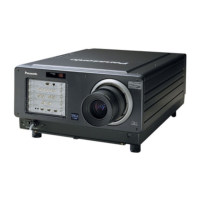
Do you have a question about the Panasonic PT-D9510E and is the answer not in the manual?
Covers earthing, protection from rain/moisture, and servicing by qualified personnel.
Requirement for a 16A fused line connection for safe operation.
Lists hazardous locations to avoid for projector installation due to vibration, moisture, or interference.
Warning to use only the specified power supply voltage (200-240 VAC) to prevent damage.
Instruction to connect an earth wire to prevent electric shocks.
Avoid looking into the lens, unstable placement, objects on top, foreign objects, and covering outlets.
Warnings about cover removal, water spills, secure plug insertion, wet hands, and cable damage.
Steps to take for smoke/odor issues and caution for injury hazards.
Dedicated power supply, avoiding vibration/shocks, and proximity to power lines.
Requirement for qualified technician for ceiling installation, including bracket usage.
Details on projector components and connectors.
Explanation of buttons, indicators, and self-diagnosis.
Explanation of STD, SYSTEM SELECTOR, POWER, and INPUT buttons.
Details on CONTRAST, BRIGHT, Numeric, PIC-MUTE, ON SCREEN, NEXT, ID SELECT, ID ALL buttons.
Description of MENU, Control level, and Arrow buttons for navigation and adjustment.
Battery insertion and usage notes.
Procedure for turning the main power ON and then the standby power.
Procedure for turning the projector from standby to main power OFF, including cooling fan operation.
Procedure for installing a projection lens, including notes on handling.
Drawing and steps for floor installation, including screen and projector placement.
Steps for projector installation, setting lens height/centerline.
Detailed table of projection distances for 4:3 aspect ratio with different lenses.
Guide for adjusting the lens focus using control buttons.
Instructions for adjusting the lens position (optical shift).
Lists available input modules (ET-MD95RGB, ET-MD95VM2, etc.) and their signal types.
Steps for removing the slot cover, fitting the module, and securing it.
Details on connecting a PC's RGB signal via D-SUB to BNC cable.
Instructions for connecting component signals (Y, Cr, Cb) from a DVD player.
Instructions for connecting video signals (LINE/Y/C) from players or VCRs.
Procedure for registering a new signal via the menu.
Signal registration steps, including name and memory number.
Steps to overwrite old data with new signal registration.
Procedure for performing general automatic picture adjustment.
Procedure for manually adjusting input signal resolution settings.
Step-by-step guide to adjust keystone (horizontal) and vertical linearity.
Guide for adjusting the COLOUR setting level and related controls.
Step-by-step guide to adjust COLOR TEMP and WHITE BALANCE.
Step-by-step guide to adjust COLOR MATCHING for R, G, B components.
Procedure for setting ID numbers (ALL or 1-64) via the OPTION menu.
Procedure for setting ID number using ID SELECT, NEXT, and numeric buttons.
List of communication parameters (Baud rate, Parity, VPS system, etc.).
Step-by-step guide to set RS-232C parameters via the menu.
Step-by-step guide for hardware modification to enable RS-422 input.
Procedure to revert the RS-232C-IN port back from RS-422.
Hardware modification steps for RS-422 output.
Procedure to revert RS-232C-OUT port back from RS-422.
Step-by-step guide to access NETWORK MODULE SETTING via menu.
Steps to start browser, enter IP, username, and password.
Interface for setting network parameters like IP address, subnet mask, and gateway.
Interface for controlling projector functions like power, input, and picture settings.
Procedure for inputting the firmware file name and uploading it.
How to check versions and initiate the rewrite process.
Step-by-step guide for performing the factory reset.
Warning about dangers associated with lamp replacement and advising professional service.
Details on lamp life span, replacement periods, and automatic shut-off.
Explains warning displays for remaining lamp time (yellow and red).
Checks for power issues: power point, cord, MAIN POWER switch, REMOTE IN 1.
Checks for picture issues: cable, signal source, mute function, signal format, Y/C selection.
Checks for remote control issues: batteries, obstruction, range, REMOTE IN 1/2.
Checks for LAN connection issues: cable, IP address, network compatibility, browser URL.
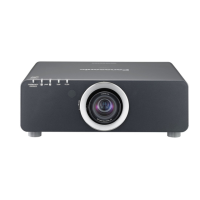


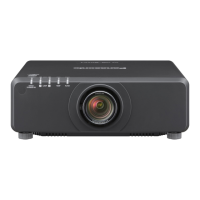
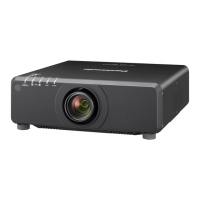

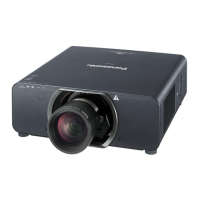
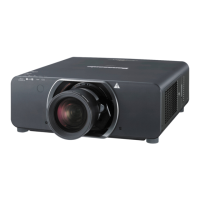

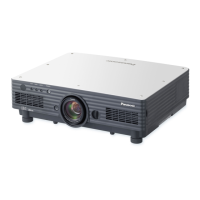
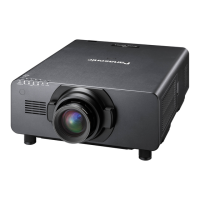

